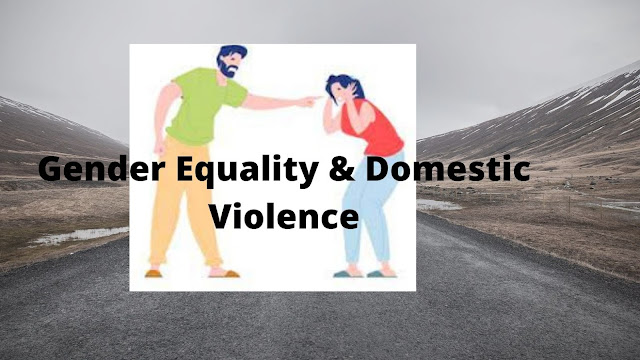Gender Discrimination and Domestic Violence in India- And a Resolve
 |
| Free Image from Shutterstock.com |
I'm enthused by the activism through the blogging theme of Cause a Chatter, 2022. Joined Blog A Chatter last year hadn't taken the opportunity out of laziness or hesitant being unfamiliar to join the Cause A chatter. The year passed helped me come around Blog a Chatter. This year, I am certainly into its idea of inclusivity, breaking through human-made social boundaries and barriers to establish an open worldview.
I chose three topics for the quarter and set the goals, and I am getting set to go steady.
My first topic is gender discrimination.
What is gender discrimination?
So, gender discrimination can happen in any geographic region, situation, workplace, home, public, private, and a single post cannot discuss it in its entirety. Here I consider its nature in Indian homes stressing female discrimination.
Women empowerment in India.
In India, females are a discriminated group historically and culturally-- the reasons pointed out as the lack of education and empowerment. Hence, I first consider how India has addressed this in the past decades. State and Civil Society's Response to Women's Movement gives the following information on the topic.
Programmes to develop and empower women in India had started long before the country became independent. For example, the colonist government had outlawed discriminatory and inhumane practices against them at the will of the men from higher social status.
Independent India prioritised this further and implemented multi-programmes and policies to better their social, political, and economic status. Among them are constitutional and legislative provisions. The Constitution of India has accepted gender equality as a fundamental right.
And India has heeded well the call made by the UN that came with programmes to improve women's status globally. UN declared 1975 as the year of International Woman and the decade following (1975 to 1985) the Decade of Woman.
The following are the constitutional provisions in India to bring the women status at par with the men.
On top of enshrining gender equality as a fundamental right, the constitution provides equality before the law and equal protection by the regulations. (Article 14)
The prohibition of discrimination on the ground of sex Article 15 (1) empowers the State governments to adopt policies of positive discrimination in favour of women (Article 15 (2), protection of life and personal liberty (Article 21).
On top of the above provisions and programmes, the government implemented impressive volumes of statutes for women's socio-economic, educational, political, and other developments in the last seven decades following independence, and all these have earned dividends. Women in India achieved remarkable progress in education, contributing to the family income, taking the helm of the companies and corporate bodies inside the nation and worldwide. In the corridors of politics and economy and boardrooms, their names resound. And the government can claim to have achieved significant progress in women empowerment and gender equality based on the above in the public sphere.
What is happening in private in the domestic sphere?
There is no dearth of statutory regulations to protect Indian women from gender-based discriminatory distress and violence in private/inside the homes. Two such are, Prevention of Women from Domestic Violence against Act, 2005, the Dowry Prohibition Act of 1961.
The former Act provides a definition of ' "domestic violence" for the first time in Indian law, with this definition being broad and including not only physical violence but also other forms of violence such as emotional and psychological abuse.' The latter Act rules dowry illegal in a nation where marriage is a market to fix women's trade at a price tag around the man's neck.
With all these well-intended statutes and legal frameworks in place, one can logically conclude that gender discrimination and gender-based and dowry-related domestic violence are things of the past in India and homes are safe for women.Is it really? Let us look at the statistics of the past decade.
What is the Stumbling Block?
Questions Need be Asked
Is There a Resolve?
Listen to Deepa Narayan, the social psychologist, talks about gender equality, domestic abuse and more in her TED Talk.
This post is part of Blog Chatter's Cause A Chatter.

Rather pathetic situation.
ReplyDeletePathetic and the situation is showing no sign of bettering.
Delete